Spotlight on Fry's Spring
-
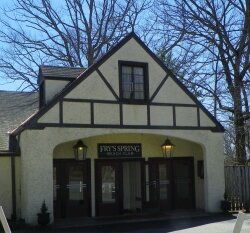 The Fry's Spring Beach ClubSamantha Masone
The Fry's Spring Beach ClubSamantha Masone -
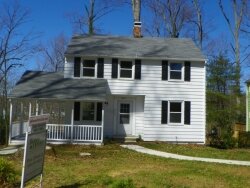 2605 Jefferson Park Circle - 4 BR, 3 bathrooms, 2668 sq. ft., .33 acres, asking price: $395,000, assessment: $382,200, Tommy Brannock, BHG Real Estate III, 434-981-1486Samantha Masone
2605 Jefferson Park Circle - 4 BR, 3 bathrooms, 2668 sq. ft., .33 acres, asking price: $395,000, assessment: $382,200, Tommy Brannock, BHG Real Estate III, 434-981-1486Samantha Masone -
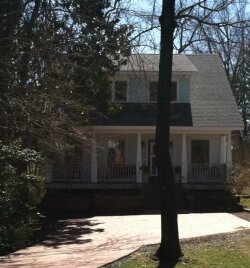 208 Harris Road, 3BR, 2 full & 1 half-bath, 2065 sq. ft., .17 acres, asking price: $365,000, assessment: $228,000, Robert Hughes, Nest Realty Group, 434-989-3592Samantha Masone
208 Harris Road, 3BR, 2 full & 1 half-bath, 2065 sq. ft., .17 acres, asking price: $365,000, assessment: $228,000, Robert Hughes, Nest Realty Group, 434-989-3592Samantha Masone -
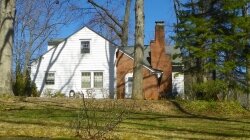 201 Cleveland Avenue - 3 BR, 1 full & 1 half-bathroom, 2481 sq. ft., .44 acres, asking price: $310,000, assessment: $292,700, Joan Jay, Loring Woodriff Real Estate Associates, 434-906-1806Samantha Masone
201 Cleveland Avenue - 3 BR, 1 full & 1 half-bathroom, 2481 sq. ft., .44 acres, asking price: $310,000, assessment: $292,700, Joan Jay, Loring Woodriff Real Estate Associates, 434-906-1806Samantha Masone -
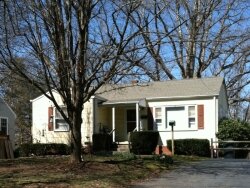 231 Stribling Avenue, 3BR, 1 bathroom, 1896 sq. ft., .24 acres, asking price: $220,000, assessment: $222,800, Robert Hughes, Nest Realty Group, 434-989-3592Samantha Masone
231 Stribling Avenue, 3BR, 1 bathroom, 1896 sq. ft., .24 acres, asking price: $220,000, assessment: $222,800, Robert Hughes, Nest Realty Group, 434-989-3592Samantha Masone -
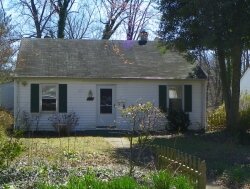 1526 Broad Avenue - 3 BR, 1 bathroom, 1751 sq. ft., .17 acres, asking price: $180,000, assessment: $188,800, Aaron Manis, Sloan Manis Real Estate Partners, 434-962-7039Samantha Masone
1526 Broad Avenue - 3 BR, 1 bathroom, 1751 sq. ft., .17 acres, asking price: $180,000, assessment: $188,800, Aaron Manis, Sloan Manis Real Estate Partners, 434-962-7039Samantha Masone
Area: Fry’s Spring
Price range: $108,800-$882,500
Schools: Jackson Via & Johnson, depending on location, Walker and Buford, Charlottesville High School
Pros: Easy access to amenities, tight-knit community
Cons: Effects of student and rental housing on property values, heavy traffic during football games
Lions and tigers and bears in Fry’s Spring? How about a casino, an open-air theater, and an amusement park? If those images stretch the imagination, add in a 100-room hotel, the county’s first steeplechase, and a natural spring that served as the site of a great jubilee held in 1869 “without regard to color”– and the image becomes downright fantastical. But it's true – the Fry’s Spring area was home to all of these attractions through the years.
Today, the Fry’s Spring area extends from Old Lynchburg Road to just beyond Shamrock Road. It encompasses numerous streets in between and has seen dozens of transactions over the past couple of years with prices ranging from $108,800 to $882,500.
The neighborhood traces its beginnings to 1839 when James Francis Fry built a plantation home called Azalea Hall on land he received from his father-in-law. Azalea Hall was reportedly located south of the modern-day Fry’s Spring neighborhood on a site in the vicinity of today’s Azalea Park. But the feature that drew the most interest wasn’t Fry’s showcase home, it was his naturally occurring spring. In the mid-1800s, natural springs were not only important water sources, they were also thought to have curative properties, and the area around Fry’s Spring soon became a public gathering place.
In 1890, the Fry family transferred ownership of their estate to Jesse Lewis Maury, who opened the Albemarle Hotel– later known as the Jefferson Park Hotel– in 1892. Hoping to keep his 100-room hotel full, Maury applied for permission to operate a railway along the city streets, though his efforts didn’t garner much support, and the tracks that were constructed– documented by prolific 19th and early 20th century Charlottesville photographer Rufus Holsinger– have long since disappeared.
According to Charlottesville and the University of Virginia, A Pictorial History, by Fred T. Heblich and Mary Ann Elwood, the aforementioned steeplechase was first held in the late 1800s on a portion of the Fry estate, and by 1900 the Albemarle Horse Show Association was holding its yearly exposition at Fry's Spring. In 1907, the Wonderland Corporation created what is described by some sources as a "menagerie" and by others as an "amusement park" on property adjacent to the Albemarle Hotel.
The presence of the hotel and the park that surrounded the spring proved attractive to homeowners seeking a healthy alternative to city life, and land development companies abounded. Following the economic crash of 1893, the hotel foundered and the surrounding land was carved into lots, allowing the Fry’s Spring neighborhood to thrive even as the hotel was demolished in the early 20th century.
The loss of both the short-lived Wonderland and the Jefferson Park Hotel undoubtedly changed the character of the neighborhood, but residents didn’t have to wait long before the Fry’s Spring Beach Club helped fill the void. According to Rufus Holsinger's book Holsinger's Charlottesville, in 1921, G. Russell Dettor purchased the Fry's Spring complex where the Albemarle Hotel, its park, and the surrounding amusements had once stood.
The club opened for business and became a huge success in the community, though it refused to admit African Americans until 1970. In 1992, the club was sold to its members, and the pool was replaced in 2003.
Inessa Telefus, Vice-President of the Fry’s Spring Neighborhood Association, feels that the Fry's Spring Beach Club, which continues to operate today and is located within walking distance of her home, enhances the experience of living in the neighborhood.
Telefus, who first lived in the Fry’s Spring area as a renter in the late 1990s and became a homeowner there in 2004, notes some of the changes she has observed.
“Jefferson Park Avenue used to have a more residential feel. Now there are high-rise apartment buildings,” she says. “Things are still changing in pockets where the student rentals are clustered, but I think the students bring great energy to neighborhood.”
Telefus says that having sidewalks and being within walking distance of the university were important criteria when it came to choosing a place to live. These days, she’s thrilled to be able to stop for coffee or grab a pizza at Fry’s Spring Station along the way, though she admits to wishing that the trolley stopped at the Beach Club.
But public transportation is still fairly accessible. “You can walk down to JPA and hop on the trolley,” she says.
As an agent with Loring Woodriff Real Estate Associates, Telefus believes that real estate in Fry’s Spring is a desirable investment. “There are houses with various price points, and some families move up to larger homes within the neighborhood,” she observes. “We’re a community geared toward families. We have charming older houses on park-like settings with lovely trees, many families can walk to the Beach Club and to the elementary schools, and there’s also Azalea Park, which has been renovated and connects to the Rivanna Trails.”
Though Telefus notes that some families have relocated due to the number of renters, she doesn’t see this as a problem, especially given the active involvement of the Neighborhood Association.
“We’re trying to protect and preserve the neighborhood feel and to minimize the impact of the renters and the students. Besides,” she adds with a laugh, “where else can you live and hear the Rolling Stones?”
1 comment
I can tell you from first hand knowledge (I live there), the transient nature of the rental community is destroying that neighborhood. It is not caused entirely by the students either, it is the pockets of low income housing which are constantly cycling through residents and bringing crime and urban sprawl further and further up JPA and if we don't effect the amount of renters by passing some legislation to install zoning restrictions on the amount of rental property or the population density allowed in our area, the homeowners will leave. Just as I plan to do here shortly. Let's save our neighborhood.